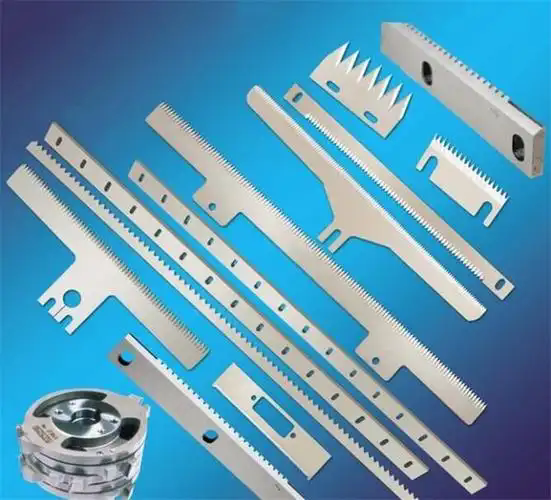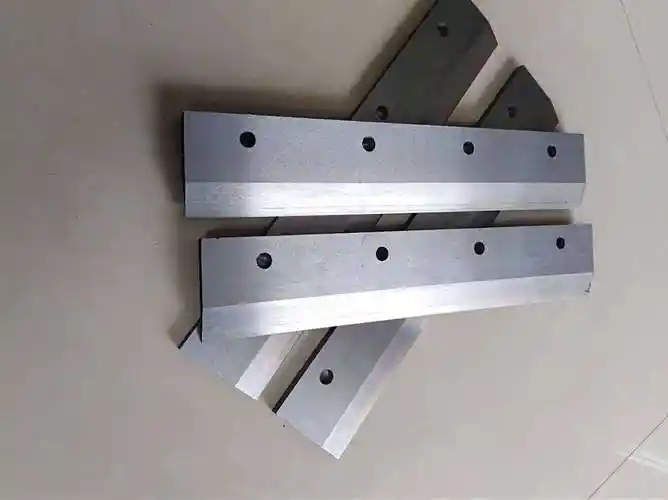Food processing knives play a crucial role in transforming raw materials into finished products. These knives, which come in various shapes, sizes, and materials, are designed for specific functions in the food production process. Their design and durability are essential for efficiency, consistency, and hygiene in the food industry. This article will explore different types of industrial food processing knives, their uses, and their evolution, particularly during the industrial revolution.

Types of Industrial Food Processing Knives
The food processing industry demands high-performance knives capable of handling a wide range of tasks. These tasks include chopping, slicing, dicing, mincing, and filleting, among others. Below are the main types of knives used in food processing:
| Knife Type | Primary Use | Typical Material | Industries |
|---|---|---|---|
| Butcher Knives | Meat cutting, trimming, and processing | High-carbon steel | Meat processing |
| Slicing Knives | Slicing meat, fish, and other food products | Stainless steel | Meat, fish, and bakery |
| Deboning Knives | Removing bones from meat and poultry | Stainless steel, ceramic | Poultry, meat processing |
| Vegetable Knives | Cutting and dicing vegetables | Carbon steel, ceramic | Vegetable processing |
| Filleting Knives | Skinning and filleting fish | Flexible stainless steel | Fish processing |
| Cleavers | Heavy chopping and cutting through bones | High-carbon steel | Butchery, large meat cuts |
| Bread Knives | Slicing bread and pastries | Serrated stainless steel | Bakery |
| Peeling Knives | Peeling fruits and vegetables | Stainless steel | Fruit and vegetable processing |
Key Factors Affecting Food Processing Knives
When selecting knives for food processing, several factors must be considered to ensure efficiency, safety, and hygiene. These factors include:
- Blade Material
- Stainless Steel: Known for its corrosion resistance, stainless steel is commonly used in food processing knives. It is easy to clean, durable, and resistant to rust, making it ideal for contact with food.
- High-Carbon Steel: This material holds a sharp edge longer than stainless steel but can be prone to rusting if not maintained properly. It is often used for knives that need to perform precise cuts, such as butcher knives.
- Ceramic: While ceramic knives are sharper and lighter than metal knives, they are more brittle and prone to breaking. They are used in specialized food processing tasks like slicing vegetables or deboning poultry.
- Blade Shape
- Straight Blades: Used for precision cutting tasks, such as slicing meat or vegetables.
- Serrated Blades: These are essential for cutting through tougher outer layers of food, such as bread or certain fruits and vegetables.
- Curved Blades: These blades offer more flexibility and are ideal for filleting fish or removing meat from bones.
- Size and Length
- The size of the knife determines how much material can be processed at once. Larger knives are used for heavy-duty tasks, while smaller knives are more suited for intricate tasks like deboning or skinning.
- Ergonomics
- Comfort is crucial for workers who use knives for extended periods. Ergonomically designed handles reduce hand strain and improve control during operation, helping to prevent accidents.
Historical Evolution of Food Processing Knives
Food Processing Knives During the Industrial Revolution
During the Industrial Revolution, food processing underwent significant changes. The rise of mechanized tools and new technologies led to the development of specialized knives designed for mass food production. Before the industrial revolution, food processing was a largely manual and labor-intensive process, with workers using basic tools like axes and cleavers for meat processing. However, as the industry began to scale up, the demand for more efficient and durable knives grew.
Key changes during this period include:
- Mass Production of Knives: Advances in manufacturing processes allowed for the mass production of specialized food processing knives. This made knives more affordable and accessible to a larger number of food processing facilities.
- Introduction of Powered Machines: The invention of powered machines, such as meat slicers and grinders, required the development of blades that could withstand higher speeds and greater pressure.
- Better Steel Alloys: During the Industrial Revolution, the introduction of stronger and more durable steel alloys allowed for the production of knives that could maintain their sharpness for longer periods, thus reducing downtime for sharpening and increasing efficiency.
The mass production of knives revolutionized food processing, enabling the industry to meet the demands of an ever-growing population and scale up food production at unprecedented rates.

Modern Food Processing Knives
In the modern era, food processing knives have become even more specialized. With advancements in materials science and technology, knives have been designed to meet the evolving needs of the industry.
- Precision Cutting Knives
- Modern knives, such as slicing knives and dicing knives, are built for precision and consistency. These knives are used in automated food processing machines and offer uniformity in cuts, which is crucial for packaging and presentation.
- Hygienic Standards
- With an increasing focus on food safety, modern food processing knives are designed to meet stringent hygienic standards. They are easier to clean, and many feature antimicrobial coatings to prevent bacterial growth on the blades.
- Technological Innovations
- Recent innovations include the use of laser-cut blades, which are incredibly sharp and offer longer-lasting performance. Some food processing knives are now equipped with ergonomic handles that reduce the risk of worker injury and fatigue during prolonged use.
The Role of Knives in Different Food Processing Industries
| Industry | Knife Applications | Knife Types Used |
|---|---|---|
| Meat Processing | Cutting, trimming, deboning, filleting | Butcher knives, Deboning knives |
| Fish Processing | Filleting, skinning, and portioning fish | Filleting knives, Butcher knives |
| Vegetable Processing | Chopping, slicing, and dicing vegetables | Vegetable knives, Slicing knives |
| Bakery | Slicing bread, pastries, and cakes | Bread knives, Serrated knives |
| Fruit Processing | Peeling, dicing, and slicing fruits | Peeling knives, Slicing knives |
Conclusion
Food processing knives are indispensable tools that ensure the efficient, hygienic, and precise preparation of food products across various industries. From the traditional knives used during the industrial revolution to modern, high-tech blades designed for precision, these tools have evolved to meet the demands of a fast-growing food production industry. As technology continues to advance, the design and materials of food processing knives will keep improving, helping to make food production safer, faster, and more cost-effective.
Selecting the right industrial food processing knife depends on the task at hand, and understanding the history, design, and applications of these knives will help ensure that food processing operations run smoothly and efficiently.
